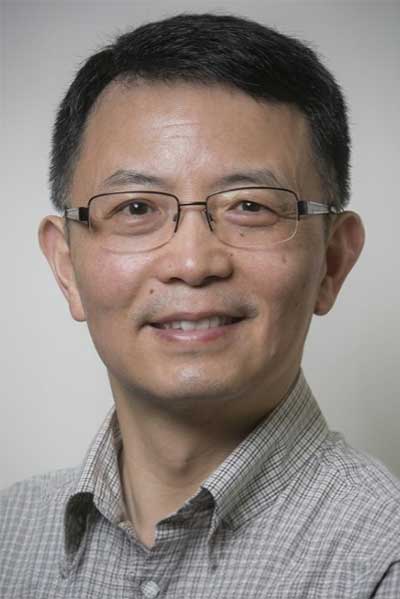A cross-disciplinary understanding of the chronic pain associated with musculoskeletal diseases is emerging in joint disorders as research suggests rheumatic pain and joint inflammation are, at least to some extent, uncoupled consequences that require more study in order to develop more effective treatments.

In the Sunday, Nov. 12, session No Pain and Much to Gain: Mechanisms and Targets of Pain in Rheumatic Diseases, researchers will examine the cellular and molecular mechanisms driving neuropathic and dysfunction pain in disorders such as rheumatoid arthritis (RA) and osteoarthritis (OA), and present novel therapeutic targets that could be used to develop safer, nonaddictive pain management interventions.
The session will begin at 12 p.m. PT in room 29A-D of the San Diego Convention Center. It will be available on-demand within 24 hours of the live presentation for registered ACR Convergence 2023 participants.
“Over the last several decades, my lab and many other labs all over the world have provided compelling evidence that the microglia cells and astrocytes are important in the induction and maintenance of chronic pain through neuroimmune interaction,” said Ru-Rong Ji, PhD, a Distinguished Professor of Duke University and Professor of Anesthesiology, Cell Biology and Neurobiology at Duke Medical Center. He is also Director of the Center for Translational Pain Center, Duke University School of Medicine. He will discuss neuroinflammation and the use of immunotherapy in pain management.
“The overall concept is to use those approaches that allow you to tune in immunity in the right range,” he said. “Transient pain relief is not healing. To achieve real healing, you need to target the underlying disease and the deficits in immune cells and neurodegeneration.”
In conditions with chronic pain, the microglia cells are fairly active and can produce proinflammatory cytokines like tumor necrosis factor (TNF) and interferon beta-1, and therefore contribute to inflammation in the central nervous system, i.e. neuroinflammation, Dr. Ji explained.
“These cytokines are regulating the neuroinflammation. They can also directly regulate pain sensitivity through their neuronal receptors,” he continued. “They are powerful neuromodulators in addition to immunomodulators.”
For the past decade, more research has focused on pro-resolution mediators derived from omega 3 fatty acids like fish oil.
“In patients with chronic pain, we think one underlying mechanism is that there is a deficit in the resolution capability,” Dr. Ji said. “Normally with an injury, the inflammation or pain should resolve within a certain period of time. But because of this dysregulation and the lack of production of pro-resolution mediators, such as resolvins, they fail to resolve and it becomes chronic inflammation and chronic pain.”
There are two basic approaches to treating these chronic conditions: blocking detrimental cytokines or promoting the patient’s pro-resolution capability, which Dr. Ji said may result in fewer side effects.
“If you block TNF, you may have a reduction in inflammation, but you also have other consequences, such as infection. You need cytokines to fight against a bacterial infection,” he explained. “You need to control your immunity. Too much inflammation is certainly bad, but you also need some inflammatory response. So, immune suppression is not good either.”
Rachel Miller, PhD, BS, Associate Professor of Internal Medicine, Division of Rheumatology, at Rush University Medical Center, will discuss biomechanical pathways of pain in OA, focusing on experimental evidence from translational mouse models. By highlighting the relationship between progressive join damage in OA and pain pathways, she will outline the concept that the pain pathway constitutes an integral part of the failing join as an organ.
Theodore Price, PhD, the Ashbel Smith Professor in the Department of Neuroscience and Director of the Center for Advanced Pain Studies at the University of Texas at Dallas, will provide an overview of novel ligands and receptors in pain mechanisms. He will discuss novel peripheral neural mechanisms underlying RA pain that have been the focus of recent research on inflammation-independent mechanisms of RA pain using mouse genetics and behavioral approaches.
Register Today for ACR Convergence 2025

If you haven’t registered for ACR Convergence 2025, register today to participate in this year’s premier rheumatology experience, October 24–29 in Chicago. All registered participants receive on-demand access to scientific sessions after the meeting through October 31, 2026.
